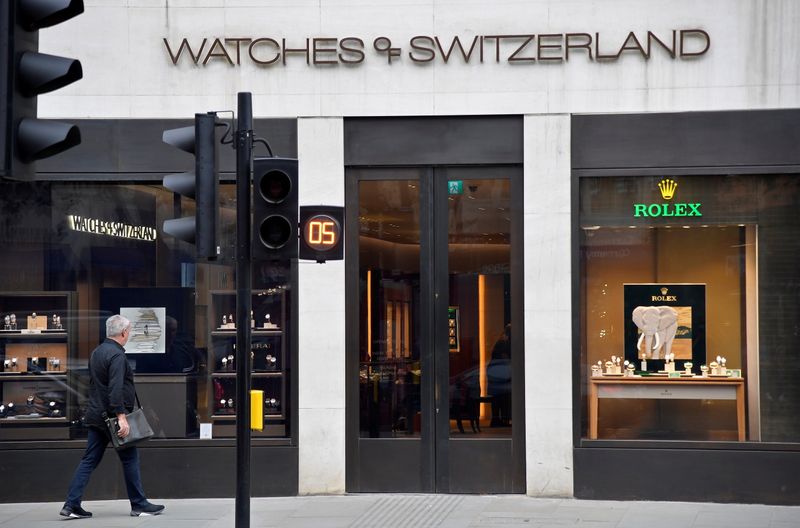With uncertainty rising, is gold’s bull run far from over?
Investing.com -- Barclays (LON:BARC) has laid out three possible outcomes for Swiss watch exports to the U.S. following the imposition of 39% tariffs, a sharp increase from the previous 10% rate.
The bank notes that major Swiss brands have not yet changed their U.S. pricing, but inventories built up before the tariff deadline mean a decision is imminent.
How brands respond will be critical to Watches Of Switzerland Group PLC (LON:WOSG), Barclays analysts said.
1) Scenario 1 – U.S. price increases only: Barclays assumes a 13% price hike in the U.S., which would leave Rolex and other supply-constrained models unaffected but cut volumes for non-supply-constrained brands by 5–25%.
Gross profit per watch would remain unchanged, though margins would fall.
Analyst Richard Taylor sees “2-11% EPS downside risk in this scenario” for WOSG, with U.S. EBIT falling 3–17%. He added that if such a scenario became permanent, weaker returns on new projects could lead the group to scale back investment, dampening longer-term growth prospects.
Fair values under this case range from 229–417p, or a -30% downside to 27% upside potential depending on the valuation multiple.
2) Scenario 2 – Global price increases: Here, brands spread the tariff burden worldwide with a roughly 2% increase across all markets. Taylor estimates this would prevent arbitrage opportunities and keep U.S. demand steadier.
He noted that price adjustments after Brexit served a similar purpose, as U.K. dealers had seen a spike in demand before brands moved to close the gap.
“We calculate EPS downside risk as flat to -4%, but believe the shares could re-rate as investors react to the more muted EPS risk,” Taylor wrote.
Under this scenario, the analyst sees fair value outcomes for WOSG shares spanning 426–596p, implying as much as 82% upside potential if a re-rating occurs.
3) Scenario 3 – Dark skies scenario: Lastly, this case assumes U.S. prices rise by 13% but both supply-constrained and non-supply-constrained brands see volume declines, by as much as 15% and 30% respectively.
Taylor warns of “significant EPS risk of between -6% to -19%,” for the group, alongside the possibility of reduced investment and de-rating. He added that while some high-demand product allocations might shift to other markets like the U.K., this would still create “significant headwinds to the group’s U.S. expansion.”
Fair values would fall between 166–287p, translating into 13–50% downside risk for WOSG.
Barclays cut its WOSG price target to 425p from 555p, applying a lower full-year 2026 (FY26) price-to-earnings (PE) of 10x (previously 13x) to reflect heightened tariff risk.
“We lower our Price Target (NYSE:TGT) as we acknowledge the increased risk to our investment case should 39% tariffs persist, along with potential earnings risk depending on the response of the major watch brands,” Taylor said.
At the current level, shares trade on an FY26 PE of 8.2x, broadly unchanged from pre-announcement levels but still well below long-term averages. Taylor said the current multiple is already partly depressed due to concerns over tariff headwinds.
